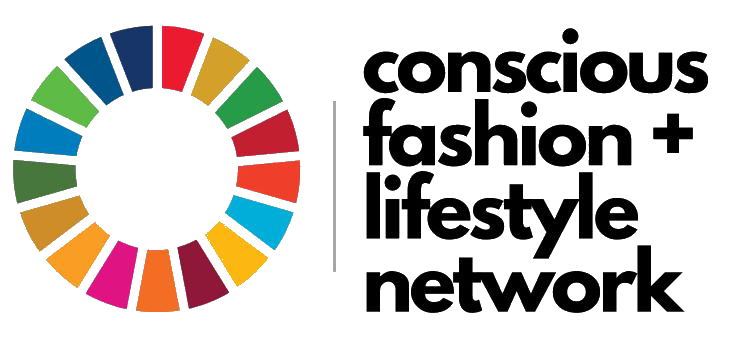Listen to insights from China: COVID-19 and the wildlife trade
Pei Su set the scene with some background information
This is a strange time for us all. I have seen history repeated, with COVID-19 first in China, where we saw people begin to get ill, and then as China began to slowly return to normal, we are in lockdown in Europe and the US. It’s a surreal time for us all and I am grateful that many of you have come to listen – our audience for this interview is truly global. I am the co-founder and CEO of ACTAsia, and we’ve been working in Asia for the past 14 years now. This outbreak of COVID-19 has affected us all, and has had a big impact on our work at ACTAsia. We’ve been working on the issue of COVID-19 intensively for the past couple of months now, so I’m very grateful that Elizabeth has invited me here today to talk to you all about it.
Many illnesses that threaten human health result from the exploitation of animals. More than 70% of emerging infectious diseases are zoonotic. SARS, MERS, swine flu, avian flu, Ebola and now COVID 19 – these all derive from animals that have been intensively farmed as livestock, or kept in unnatural conditions close to humans. We do know that disease is spread through unnatural contact between people and animals, and outbreaks have been attributed to animals as diverse as camels, civet cats, bats, pigs, chickens and possibly mink and pangolins. Some zoonotic diseases need an intermediary host, but identifying the intermediate host is complex. What they all have in common is the unnatural management of animals by people, whether wildlife or livestock, in Asia, Europe, North America, Africa – the world over. Intensive farming of wild animals for commercial uses will always pose a risk. China has a huge influence on the world and has a leading role to play in changing the outlook for human health and animal welfare, and must future-proof against diseases that pose a risk to humanity. We believe that revisions to the national livestock list can help protect wildlife, and help protect people.
The wildlife trade in China alone is estimated to be worth $74 billion, and 75% of that worth consists of fur farms. These fur farms pose a considerable threat to our safety, as they involve intensive farming and husbandry in cramped and unnatural conditions with contamination of housing and poor hygiene, where animals are under extreme stress and therefore susceptible to disease.
Our recommendations for change are:
To remove non-edible fur animals from the list of livestock
To ban fur farming and close all fur farms. We urge authorities to ensure that people impacted by the ban are offered compensation and assistance in developing alternative livelihoods, and that existing wildlife farms are phased out in an ethical and humane manner.
To stop the commercial breeding of wildlife for any category of use
To set up a food safety and animal welfare committee that can make decision using well informed legislation regarding proposed commercial uses of animals.
Before Pei talked about specifics, she explained how in China the wildlife trade is classified into five uses:
1. Food
2. Fur/clothing
3. Medicinal
4. Viewing/entertainment
5. Experiments
Elizabeth: When the ban happened, what did it mean?
Pei: It was very exciting at first that legislation was being reviewed. But the only ban applied to eating wild animals – the first use listed above of a total of five. All other four uses continue as normal. ACTAsia proposes that the use of wildlife must now be outlawed entirely for human safety.
Elizabeth: Do the markets still look the same or has that shifted?
Pei: We should look at the bigger picture – the trade is just the end of production, farming, breeding, slaughtering. We believe things have changed at markets, the ban on selling wild animals there for food is being observed, but this is not enough.
Elizabeth: So it’s a good step.
Pei: Yes it’s a good step, and this is a really sad but rare opportunity to review the situation.
Elizabeth: What animals have made it into the ban?
Pei: We were asking the same question. Using wildlife for food is forbidden, but which animals? Bear bile still allowed as not eaten. Civet cats can be bred in farms despite cuase of SARS. Fat for traditional medicine, musk for perfume, hair for make up brushes. So the risk remains.
When wildlife is listed under the national catalogue of livestock, it CAN be eaten. Although Sika deer are endangered inthe wild with numbers making up just 1,000 in China, they are also bred in captivity and it’s still allowed to eat farmed deer. Their skin, antlers, meat – can be used for food, medicinal, for their skin etc. Another four species listed under livestock are the main fur bearing animals in China: mink, blue fox, silver fox, raccoon dog. All other uses allowed – mink heart can be used for Traditional Chinese Medicine (TCM), but it is proposed under the list for consulatation that these fur-bearing animals cannot be eaten.
Elizabeth: So for a lot of animals there’s not a lot of change happening?
Pei: Not yet. Any animals listed under livestock can still be bred and eaten. The risk of future outbreaks or new diseases still a huge risk. If I were a breeder of wildlife, such as farmer of bamboo rats, snakes, peacocks, beavers, pythons – they are likely to make their case to have their species listed under the livestock list. If a species is listed, then the door is open and they can still be bred.
Elizabeth: How is this ban affecting people’s everyday lives? Are people being forced to change habits and businesses? Has anything changed?
Pei: I think we can look it this from two angles. All our lives have been changed in lockdown. Priority issues have changed in China – the issue of wildlife is now being addressed. Culture and the way poeple in China view animals and wildlife needs to change. People may agree with the proposal to stop eating wildlife, but in reality when they go to a restaurant and bamboo rat or buffalo frogs are on the menu, they won’t necessarily put two-and-two together. There’s a dish called ‘hasam’ which is a desert using frog fat. Wildlife derivatives are hidden, people need to learn what they’re using and eating and now it is affecting human health, people in China are beginning to show an interest.
Elizabeth: Just to quickly finish off with the ban on eating dog and cat meat in Shenzhen and now Zuhai. Could you tell me a bit about it.
Pei: In reviewing the list of livestock in China, a proposal was made to remove dogs and cats from this list. The list is under consultation until 8 May and people can submit any opinions to support the list, to add or remove species. If dogs remain off the list, the ban will have a foundation nationwide. Shenzhen and Zuhai have banned eating dogs at municipal level. We are optimistic about the current development but we’re not ready to celebrate. The two cities are a good start, and very significant as they’re both in Guangdong, famous for dog and cat meat consumption, as well as wildlife. For these two cities to take a lead is very positive.
Questions from the audience:
Julie: What is the best course of action for other governments or activists as to impacting China’s behaviour? Should we be sending letters to the UN?
Pei: Yes, it might help, but overall we must recognise that we ALL have a responsibility to reduce our consumption of animals. It’s not just a problem in China – we are guilty too. We don’t have wildlife markets in the same way they do in China and therefore it’s less obvious, but we all have our part to do, to help prevent future pandemics.
Malcolm: Our research in Europe has found that cultural norms, especially in rural communities, are often powerful and difficult to change by new laws. In China, to what extent is the eating of wildlife a cultural norm and will it present a challenging inertia to introducing change?
Pei: Eating wildlife has only been so popular for about the past 40 years, so it’s not such a historial, cultural habit. I do empathise with wildlife breeders because they were encouraged by the Government to enter this new intensive farming business in an attempt to lift China out of poverty. It will be necessary to offer compensation to the people affected. But hopefully the threat of future pandemics will be enough to change the way people have done things until recently in China.
Lee: In the US it’s mostly reported that bats are responsible for coronavirus. It seems like they’re the go-to wild animal to blame while allowing for further exploitation of wild animals for medicine and other fields. Are there any published studies to reveal the the virus is correlated to pangolins or other wildlife?
Pei: Yes, we can’t just blame bats, it’s a huge problem with many other species bred for medicinal and other purposes. How the virus jumped between species is still under review. the use of all species for TCM is a huge problem. Pangolin for instance is valued for its meat, its scales for TCM and claws for decoration. So much value is attached to profit, but the value missing from consideration is the place of all species in our biodiversity. We must teach the people in China to understand the problem. The food ban is a good start, but there are so many other uses that must be addressed.
Paul: Don’t you think the news about the wet markets reopening has been misreported? I tihnk the markets may be reopening but aren’t they only selling permitted species, domestic livestock like poultry, rabbits and acquatic species, fish etc.
Pei: It has taken a while to work out exactly what a wet market is, but mainly a wet market is a seafood market which also sells live animals, meat, food including vegetables and fruit. This wet market is part of a much bigger agricultural food market. It’s misleading to say we must close all markets. And are we asking for the sale of ALL live animals to be banned at markets, all over the world? We call for a permanent ban on selling all live animals, whether wild or livestock.
Kate: Is there any discussion about farmed animals being hosts for zoonotic disease?
Pei: I don’t know but I think there will be. Through this consultation list we will address the issue. But how do we classify what is a farm animal? Can wildlife be classified as a farm animal? There are many loopholes. Frogs, terrapins, amphibians, snakes, crocodiles – are they under the ban, so they can still be farmed and it’s still an ecological concern.
Anon: With all the loopholes, will we see real change, or will it revert to how it was in the past?
Pei: That is the million dollar question! I personally worked on captive breeding of wildlife 26 years ago and it was always a minority issue. People wanted to discussed the star-species: tiger, bear, pangolin when they talked about wildlife protection. Those intensively farmed were rarely discussed. Now it’s come up and it won’t go away on its own, we can all discuss it. We will use this opportunity to draw attention to the problems and voice concerns for animals.
Nicola: Will China’s Government take notice of pressure from world governments to ban the sale of wildlife at markets?
Pei: I do believe it’s not just the pressure from the west that’s needed in China. Live markets have been banned. The challenge we face within and outside China is to make the ban permanent. Pressure from all over the world from UN, WHO could help.
Elizabeth: What would you recommend the next most effective steps animals rights activists could take to change laws here at home inthe US with live markets. NYC has over 80 markets and as you say, this is now a global issue.
Pei: Paw PAC an American organisation is working on this at the moment, and has written to us to ask for support in banning this trade, so it would be good to make contact with them. We must all take responsibility together with China to try and prevent the next pandemic. The consultation period has started nationally in China, and I do think this is a channel to move forward.
What’s the role of animal welfare groups in China after COVID?
This is a chance to write to the People’s National Congress of China, and a chance to educate the public. We can start to raise issues for discussion in China. But it’s not a quick-fix, change must happen gradually through education. The consultation period for the livestock list has started, and we have a channel for change. it’s very rare to have such an opportunity and we will utilise this. But there are many organisations working on this issue in China and everyday there are new discussions in China. It’s new for many Chinese groups to lobby to influence policy, but it’s a starting point.
Anon: What’s your understanding about the role of animal welfare groups in China for promoting legislation of banning wildlife consumption after COVID-19? What are the opportunities and challenges?
Pei: I think I have explained the opportunities, allowing us to express our opinions and submit our proposal. There is lots to do, but resources can be very limited in China, limited people-power and budgets. We certainly feel it’s an important opportunity to educate the public, because the law is so far away from people’s daily lives. How does the law influence what they can and can’t do? That’s where we come in, helping people understand what wildlife is, which species, enabling the public to learn about issues which they don’t usually care about. But it’s not a quick-fix, it will take time to resolve the shifting concept of relationships with animals.
How do you go to the rural parts of China to educate?
We have a rural part to our programme. We have teachers who go to remote parts of China to teach our curriculum, and we also have online education for children in rural areas. It is important to reach rural parts of society, and we need to take education more seriously. It’s fundamental change for the future, but it won’t change overnight.
Malcolm: The results of our study programs identifying the harmful effects caused to children exposed to public animal abuse are now informing the UN committee on the rights of a child, which has been declared to end traditions and practices which have a detrimental effect on the well being of children. Would you assert that children are exposed to emotionally impacting violence against animals in these processes?
Pei: Malcolm is talking about the link between violence to animals and behaviour and emotional well-being of children, and we addressed this in our teacher taining for education in schools. We talk to shcool authorities to tell them how significant animal abuse is, don’t take it lightly because it means something significant for the future of that child. But – there is always a but – remember that often the adults don’t understand themselves. There is no one to tell this child that this behaviour or treatment of animals is wrong. When they see animals stacked in cages on top of each other, they don’t think anything is wrong as there’s no one to tell them, so it’s very hard for the child to understand what is wrong with it. When I was a child no one told me it was wrong to slaughter a chicken at the market, flipping around, taking off their feathers with the spinning machine, because I didn’t know animals were sentient beings and could suffer. I didn’t feel that was wrong when I was a child, but when I look back, I know the whole process was not correct. so what we need ot learn is step by step how to change behaviour. So we change behaviour in society through schools where teachers can influence children, and we educate consumers to understand the processes behind the goods they buy, and we talk with professionals in the legal profession about animal protection too. We inject our ideas at several different levels through society, because it wouldn’t work to just pick one section of society.
I always say that shouting and screaming in China might make you feel good, but it won’t change how people behave in future.
Elizabeth: So what can people do to support you and to support these bans – what can we do to get behind ACTAsia?
Pei: We are working non-stop through public education: we’re including relevant issues like climate change and biodiversity in our lesson plans for school children, we are working to support a review of legislation and the livestock list in China, and supporting changes to the wildlife protection law. We have no budget for this issue, and work on extremely limited resources, so monthly donations through public support are critical to us. Regular donations will enable us to continue to contribute our unique experience and professional opinion to influence stakeholders in China. Now with the global economy it’s really worrying for us.
Please go to our website, we have a dedicated COVID-19 appeal and we hope people can support us by becoming our monthly donors.
![ACTAsia [logo]](https://www.actasia.org/wp-content/themes/ACTAsia-2022-theme/assets/img/actasia-en-colour.svg)



